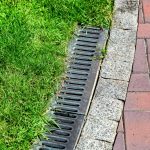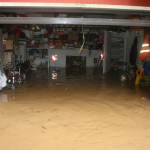The Role of Proper Drainage in Outdoor Spaces

Most homeowners focus on plants, paving, or outdoor décor but forget the one feature that keeps it all together: drainage.
You can have the most stunning garden in the street, but without proper drainage, it won’t stay that way for long.
In this article, you will be learning how to avoid blocked storm water drains, manage water flow properly, prevent erosion, avoid mosquito breeding zones, and protect your home’s foundation.
Is Your Yard Draining Right? Here’s a Quick Comparison
If guests are dropping by, nothing kills the vibe faster than muddy patches and puddles around your deck. Even the most stunning pergola loses its charm when surrounded by swampy ground and water stains. Drainage might not be glamorous, but it’s the secret behind every picture-perfect backyard.
|
Good Drainage |
Poor Drainage |
|
Lawns dry within hours after rain |
Puddles linger for days |
|
Soil feels firm underfoot |
Soil feels soft, spongy, or muddy |
|
Plants look healthy and well-rooted |
Plants yellow, wilt, or develop root rot |
|
No musty smell outdoors |
Noticeable damp or earthy odour after rain |
You can probably already tell which side your yard falls on. But if you’re still unsure, here’s how good drainage works behind the scenes.
Prevents Soil Erosion
When your yard doesn’t drain properly, the soil ends up holding more water than it should. Instead of nourishing your plants, that excess moisture can drown their roots, cutting off oxygen and nutrients. Over time, you might notice your lawn looking patchy, garden beds turning mushy, or plants yellowing even though you’ve done everything right.
You’ll often see this happen in gardens with Aussie favourites like:
- Lomandra
- Kangaroo Paw
- Grevillea
- Lilly Pilly
- Bottlebrush (Callistemon)
- Blue Fescue or native grasses
Too much standing water also creates the perfect environment for root rot and fungal diseases. Too much water makes the soil heavy and tight, so roots can’t grow like they should.
Reduces Mosquito Breeding Zones
When water sits still and full of nutrients, it becomes the perfect breeding ground for mosquitoes.
Drains with steady, slow-moving water or ones choked with plants and debris are even more inviting. Once the water stops flowing, any small pools left behind can quickly fill with mosquito larvae.
Here are some of the most common mosquito types you’ll find around Australian drains:
- Culex quinquefasciatus – the brown house mosquito, common in freshwater drains
- Culex annulirostris – the banded mosquito, a widespread nuisance across Australia
- Ochlerotatus vigilax – thrives in tidal zones
To keep your drains working properly, they need to stay clear.
No weeds, leftover silt, or standing water.
It’s a good idea to schedule drain maintenance at least once a year. That includes removing built-up silt, cutting back overgrown plants, and clearing any blockages. If your property has open, earth-lined drains, make sure there’s enough space beside them for easy access and regular upkeep.
Avoid Puddles or Soggy Areas That Remain Long After Rain
If your yard still has puddles a day or two after the rain stops, that’s a sign water isn’t draining where it should. Maybe the soil’s too compact, the slope’s too flat, or runoff is getting trapped around garden beds and pathways.
If you’re dealing with stubborn soggy patches, you can:
- Aerate compacted soil to help water soak in
- Mix in sand or compost to improve drainage
- Create a shallow channel or install a French drain to redirect runoff
- Check that downspouts aren’t dumping too close to walls or garden edges
Water Stains on Patios or Deck Footings
Dark streaks on a patio, or the green tinge on the base of a deck post after a few wet weeks. They might look small but those stains and algae patches can make your whole outdoor space look ugly.
Here’s the thing: when your patio, pathways, and pergola bases drain properly, everything looks fresher for longer.
The secret lies in design.
Builders plan for drainage from the start. This can be slightly raised decks that shed rain, slopes that guide water away, and gravel edges that catch runoff before it reaches your pavers. Even the most decorative touches, like garden beds or stone channels, can double as drainage features when they’re done right.
Conclusion
Aussie homes have always had to wrestle with the weather. Imagine long dry spells followed by sudden, heavy rain. Back in the day, wide yards and open ground handled it naturally. But with smaller blocks, paved driveways, and tight landscaping, modern drainage has to work a lot harder.
Aussie weather will keep doing its thing; wild one week, silent the next. The difference now? You’ve got the drainage game figured out.
Good drainage keeps your yard tidy and your shed stable. Find more practical outdoor care ideas on ShedBlog.






























